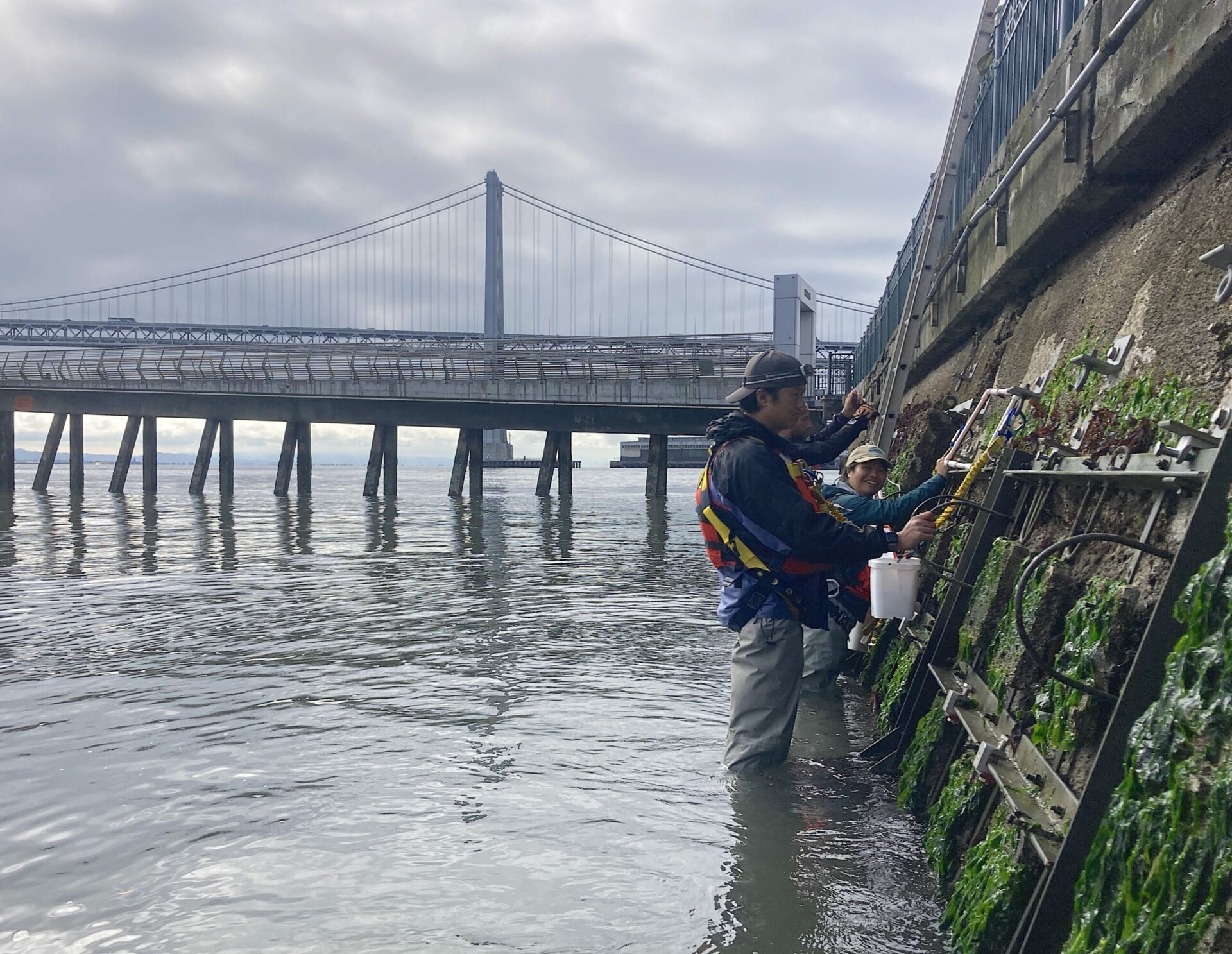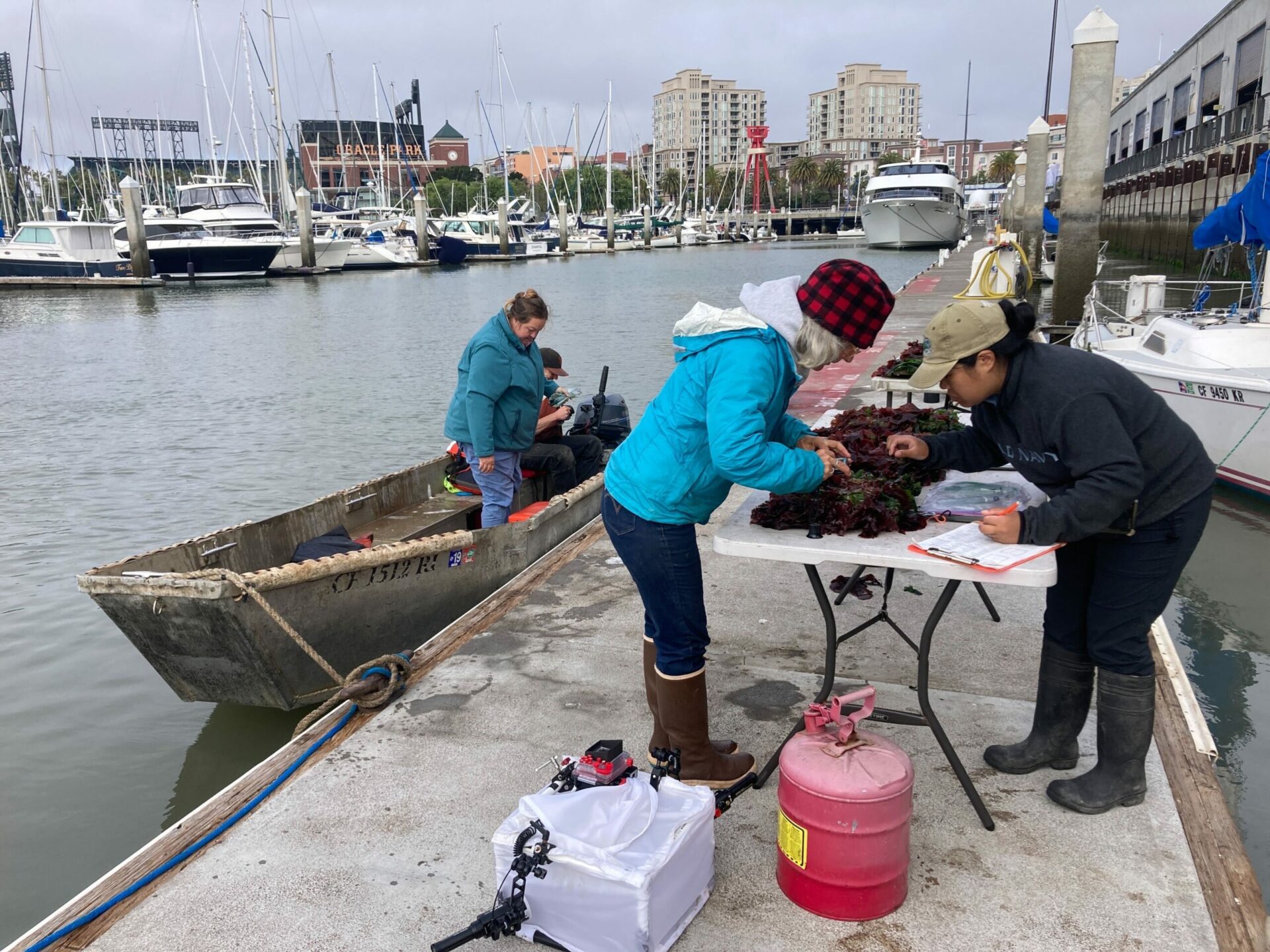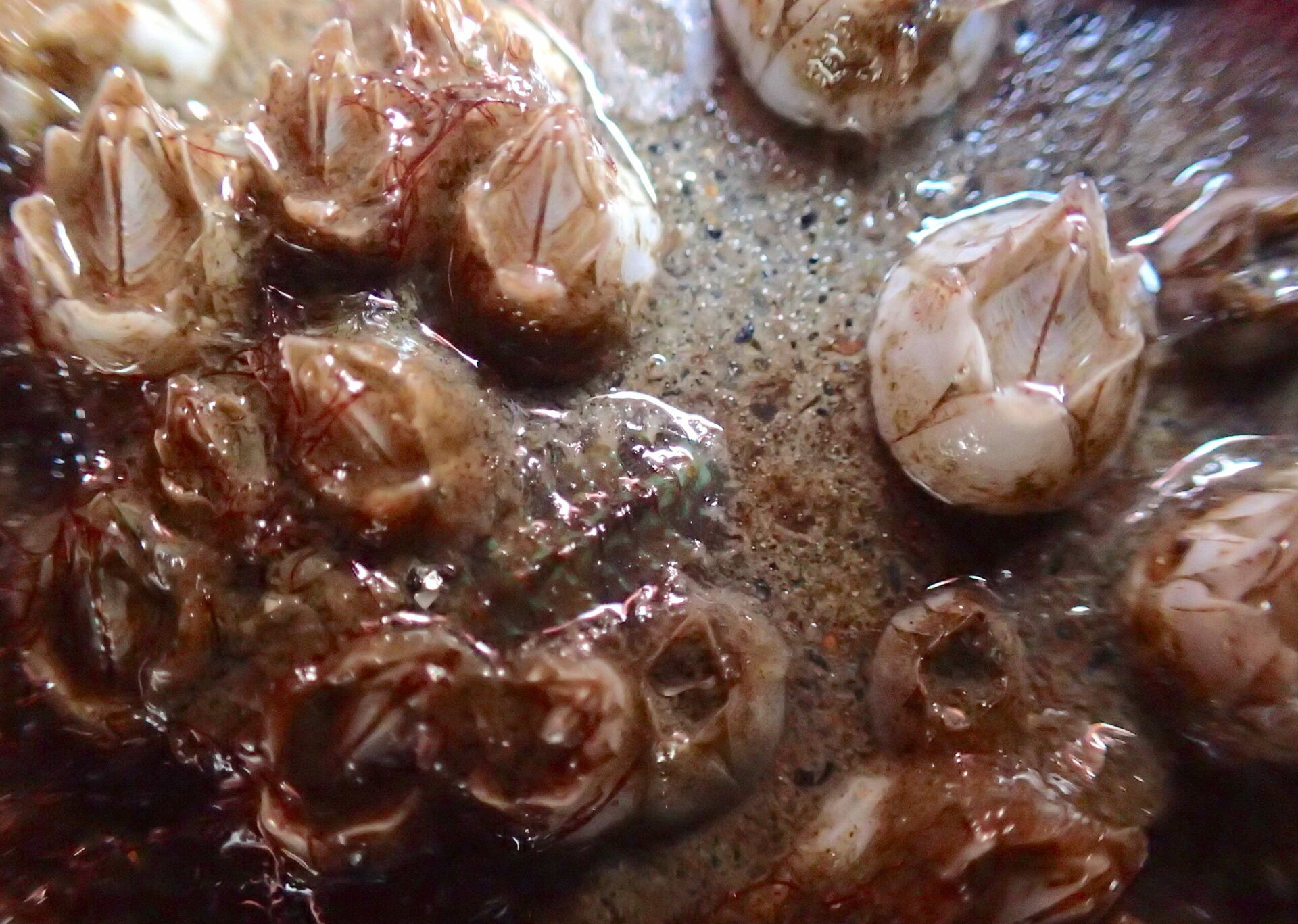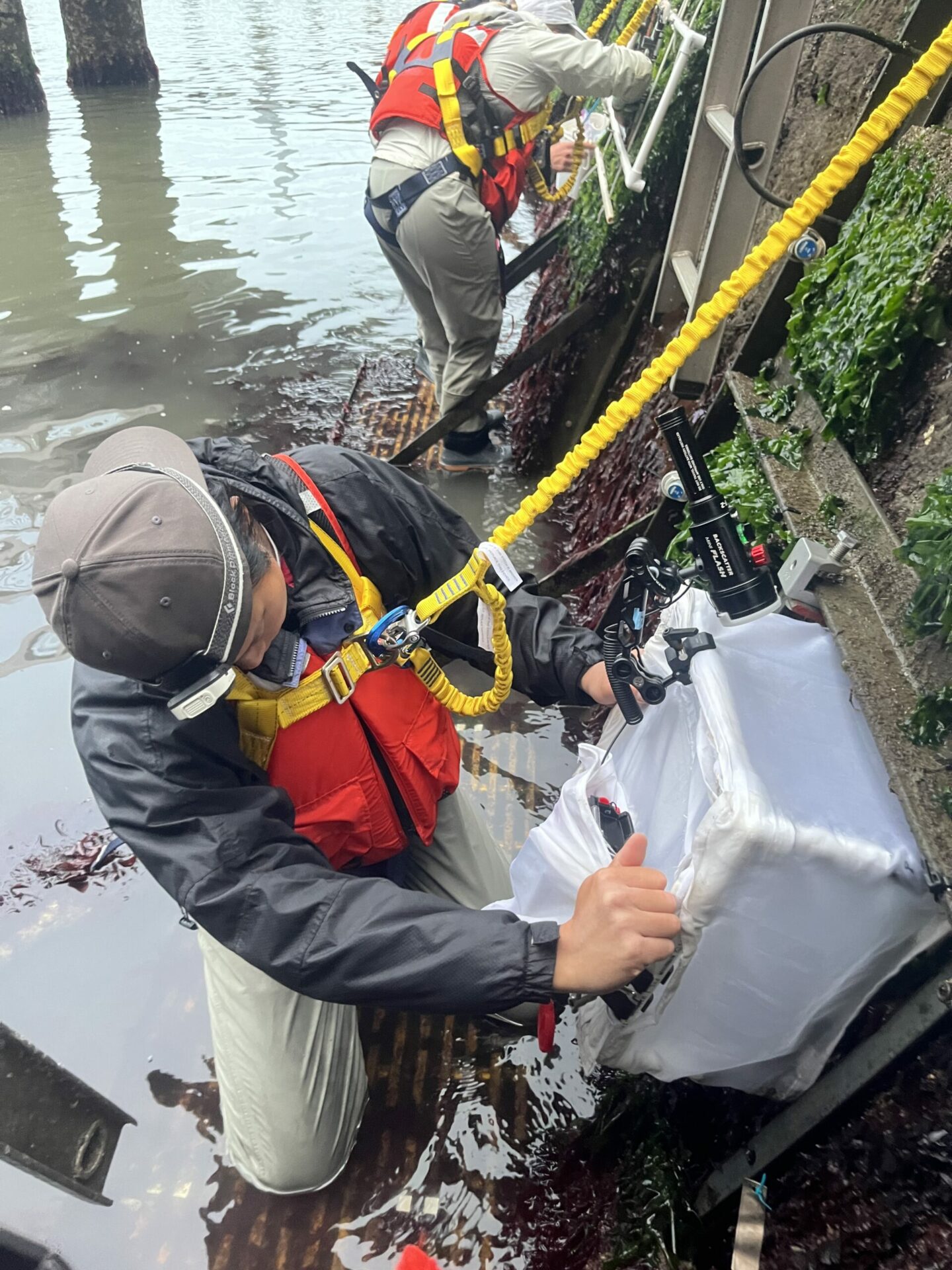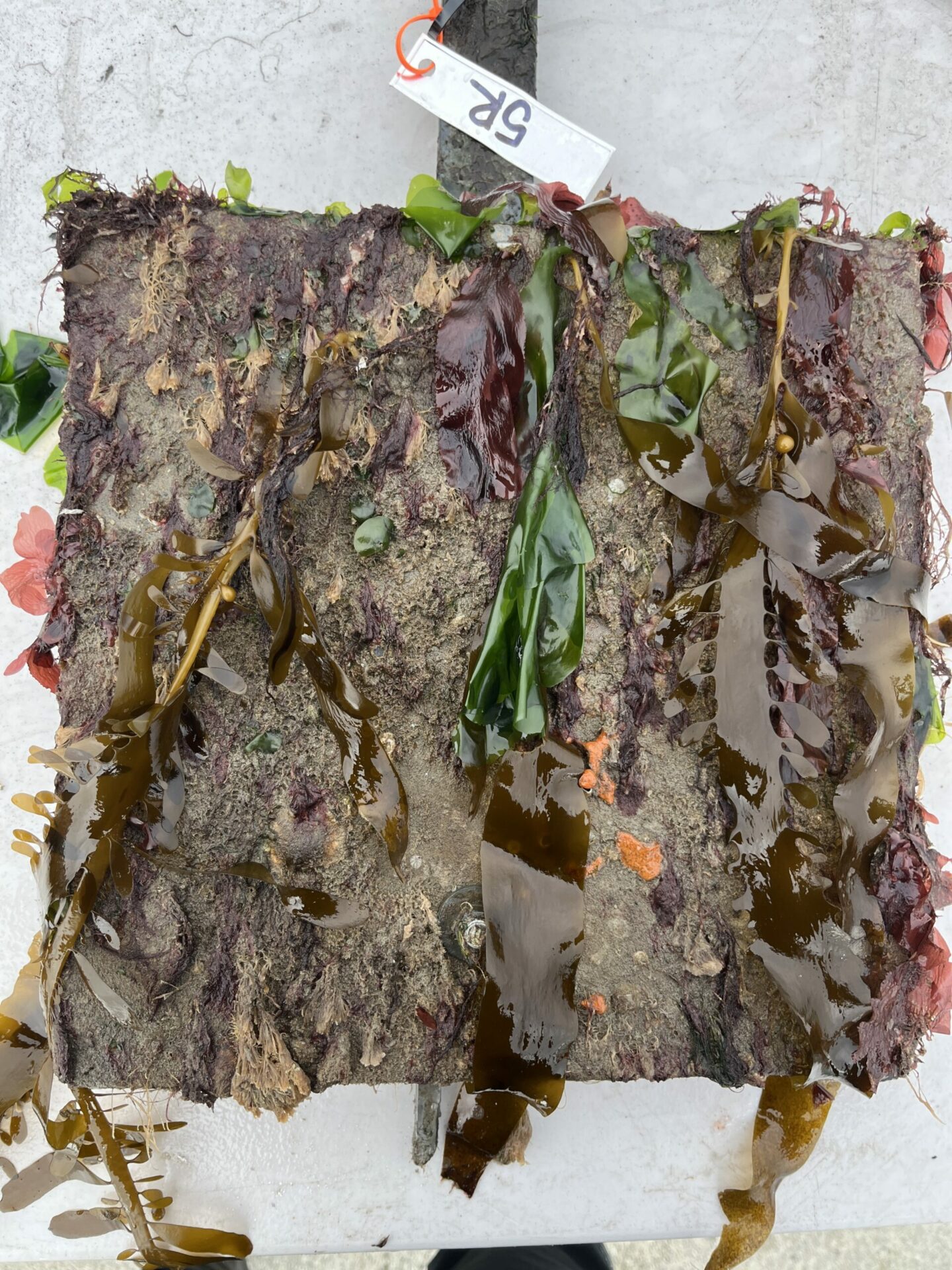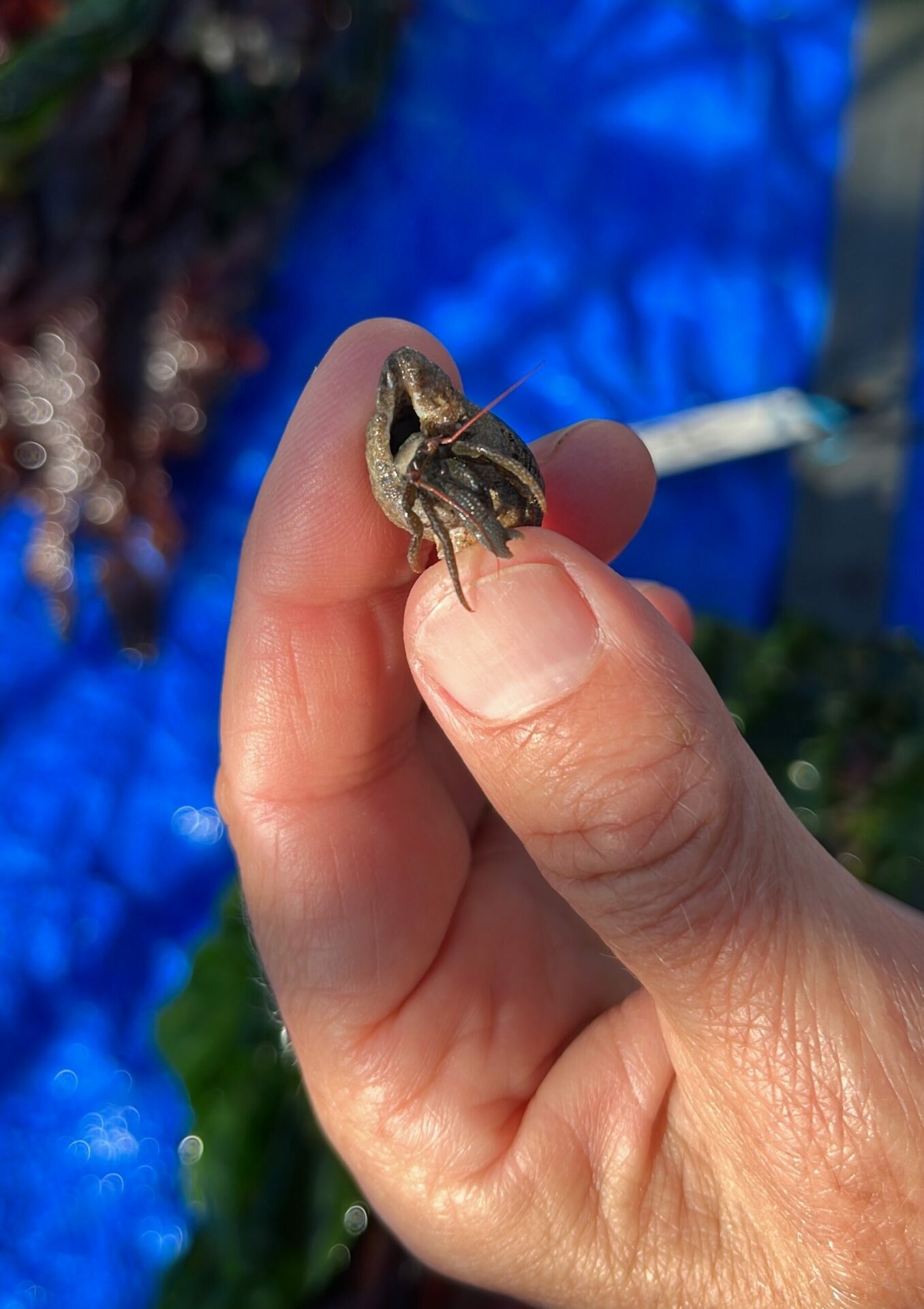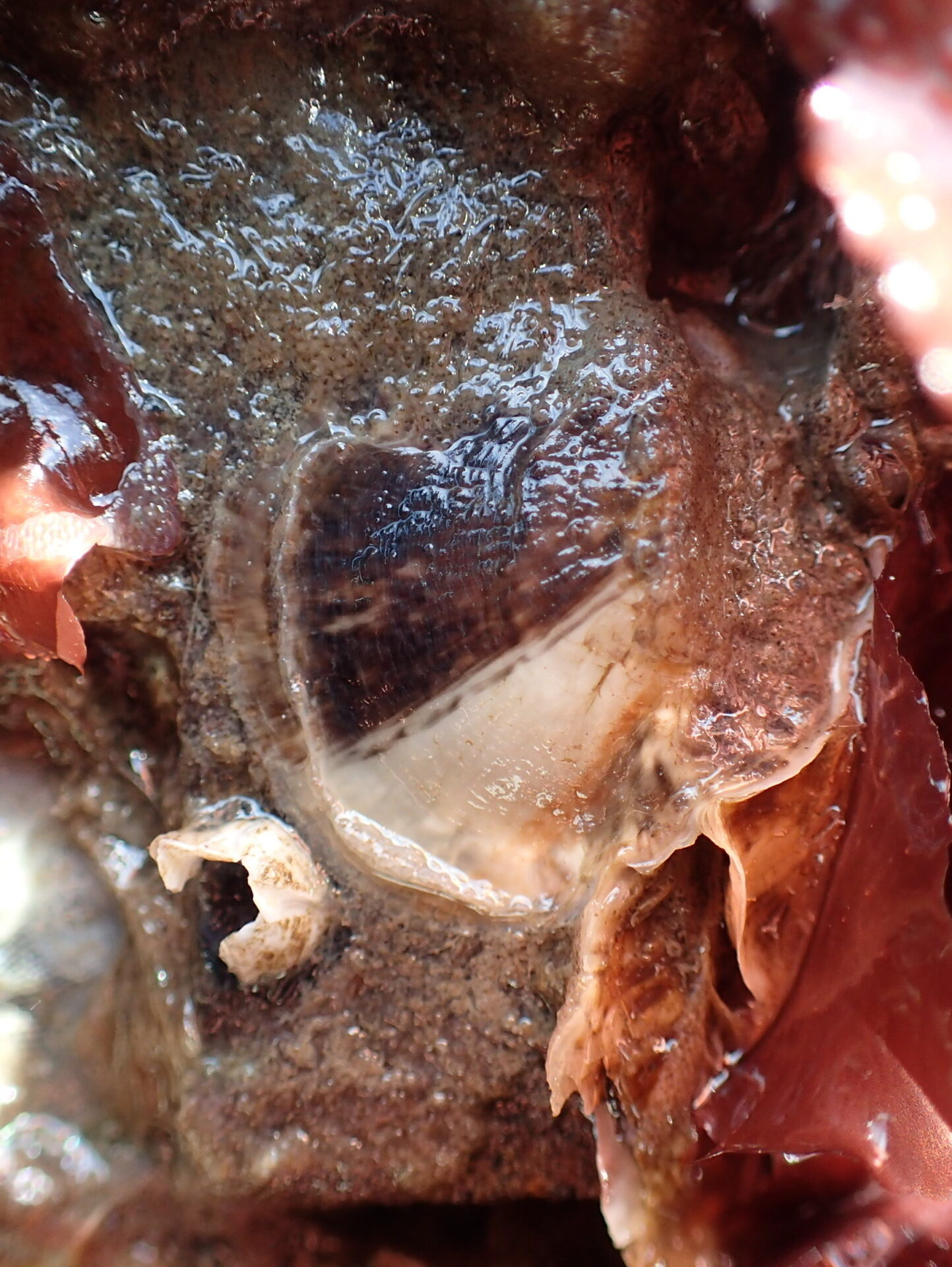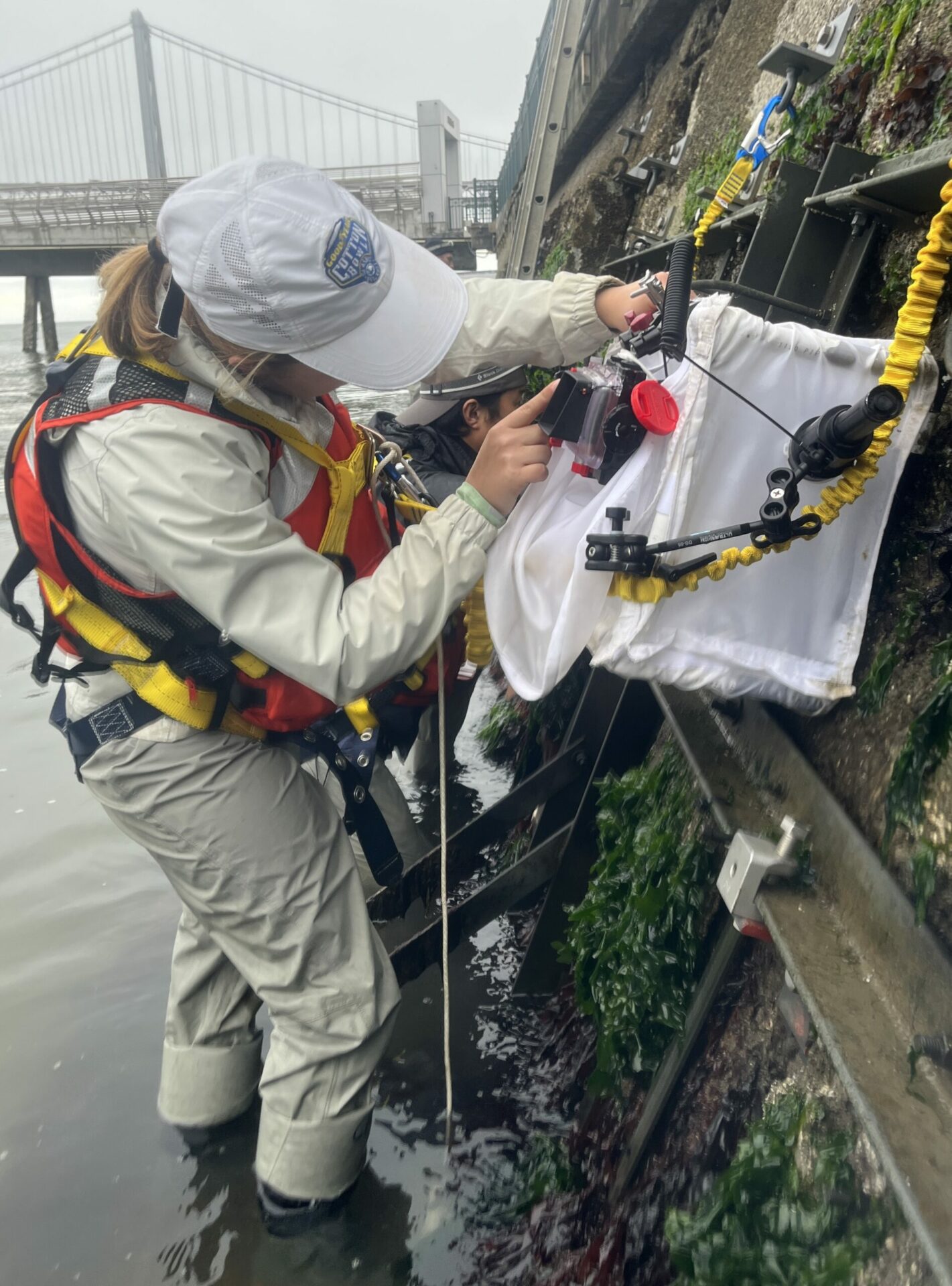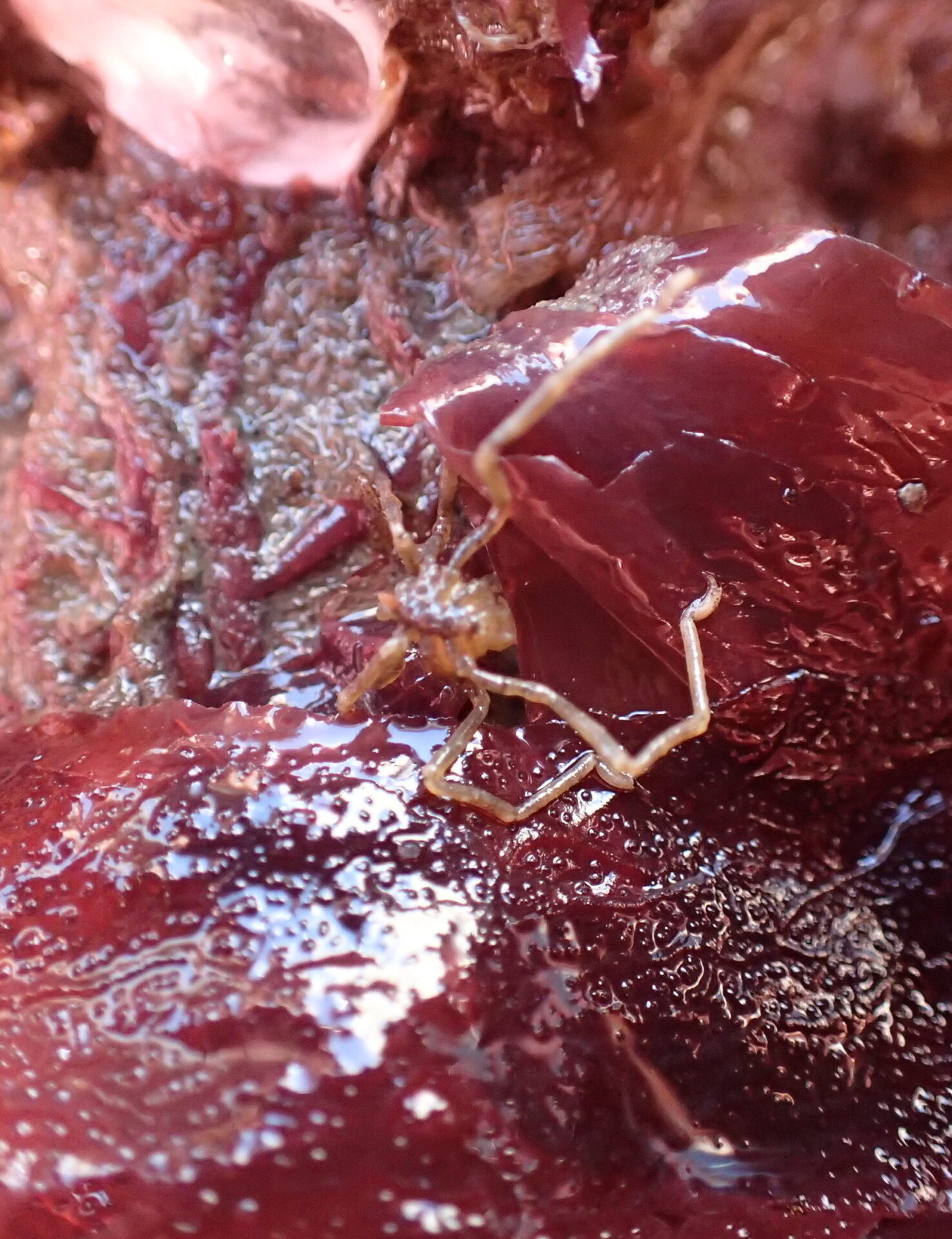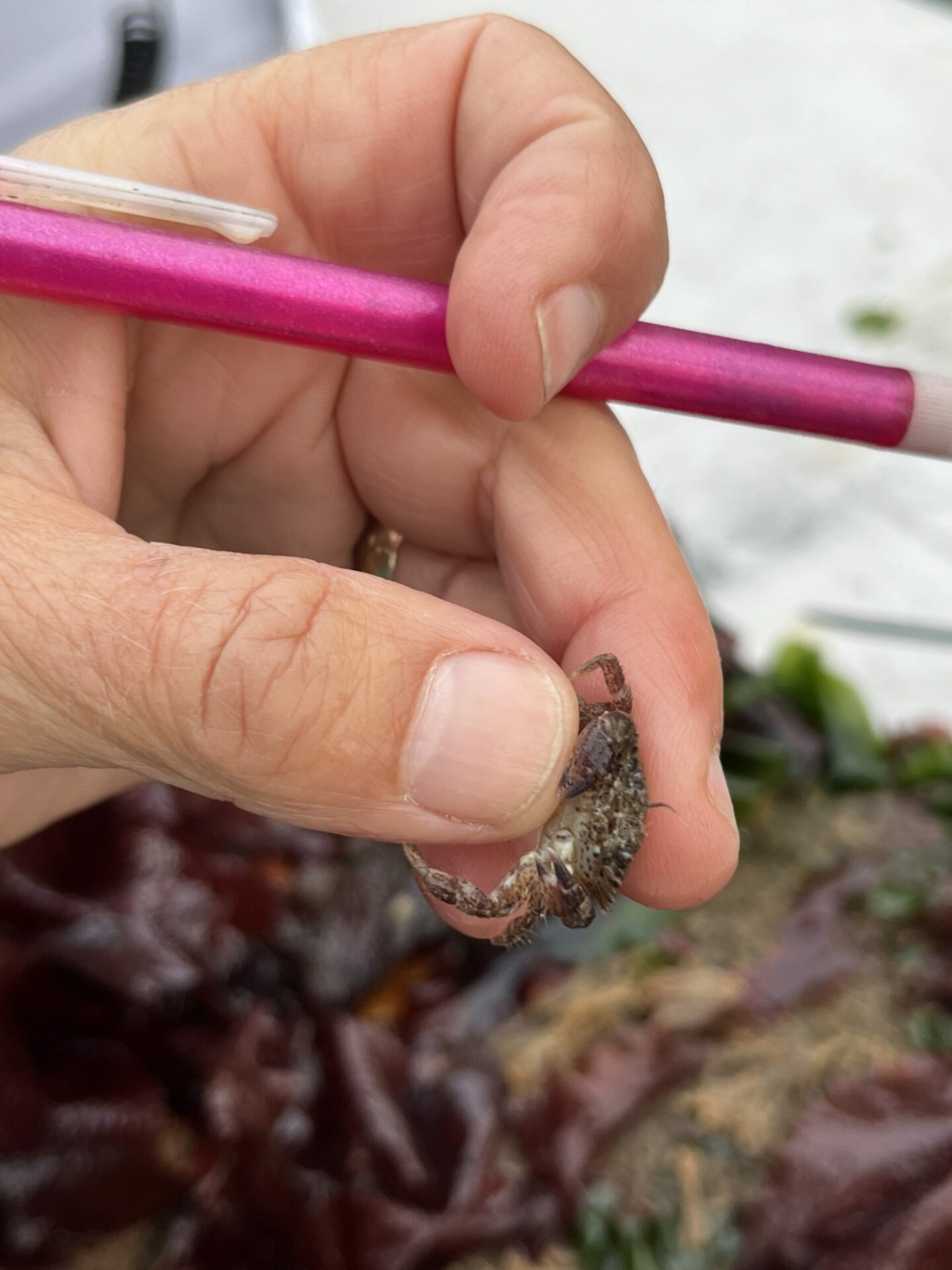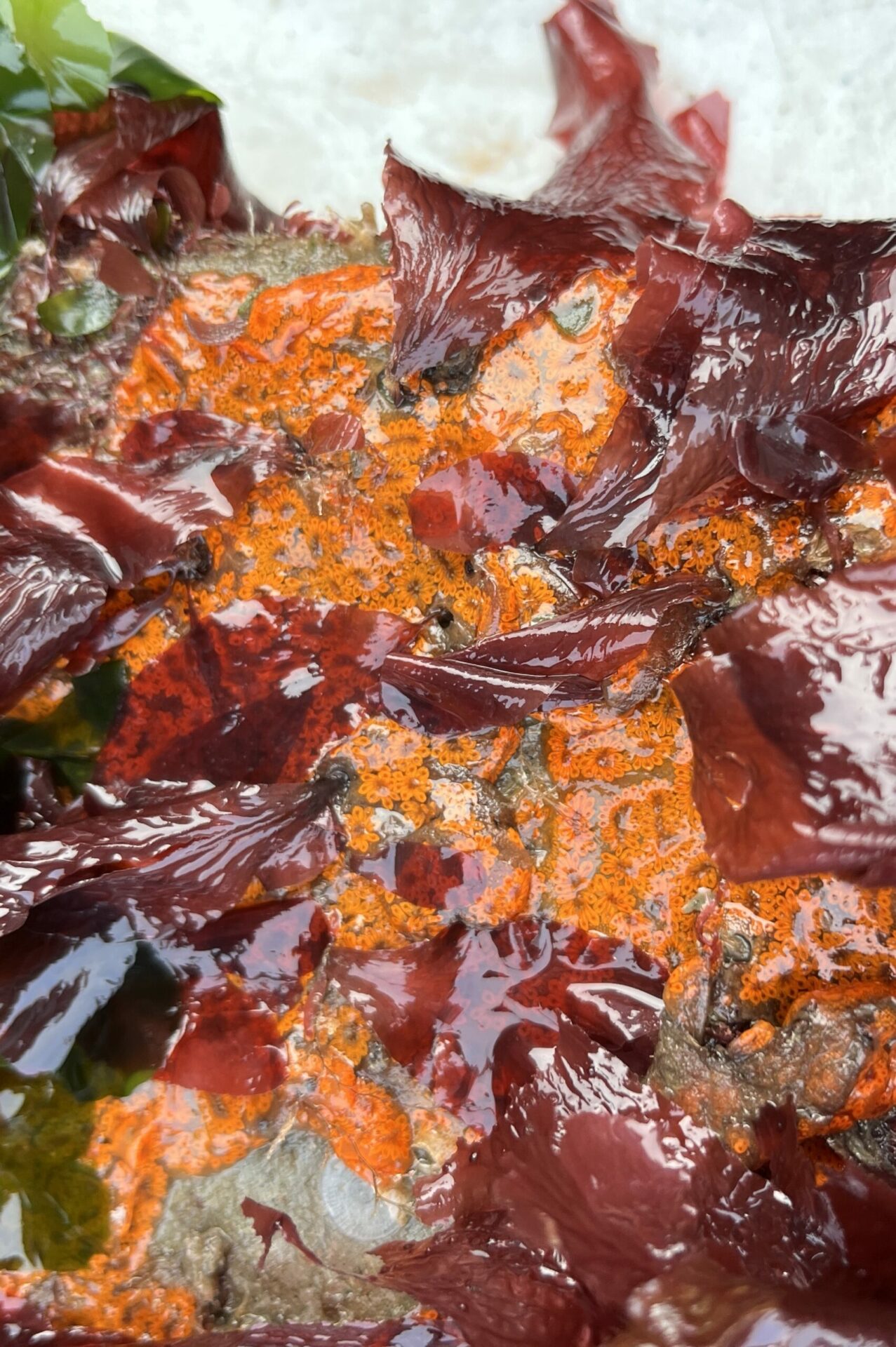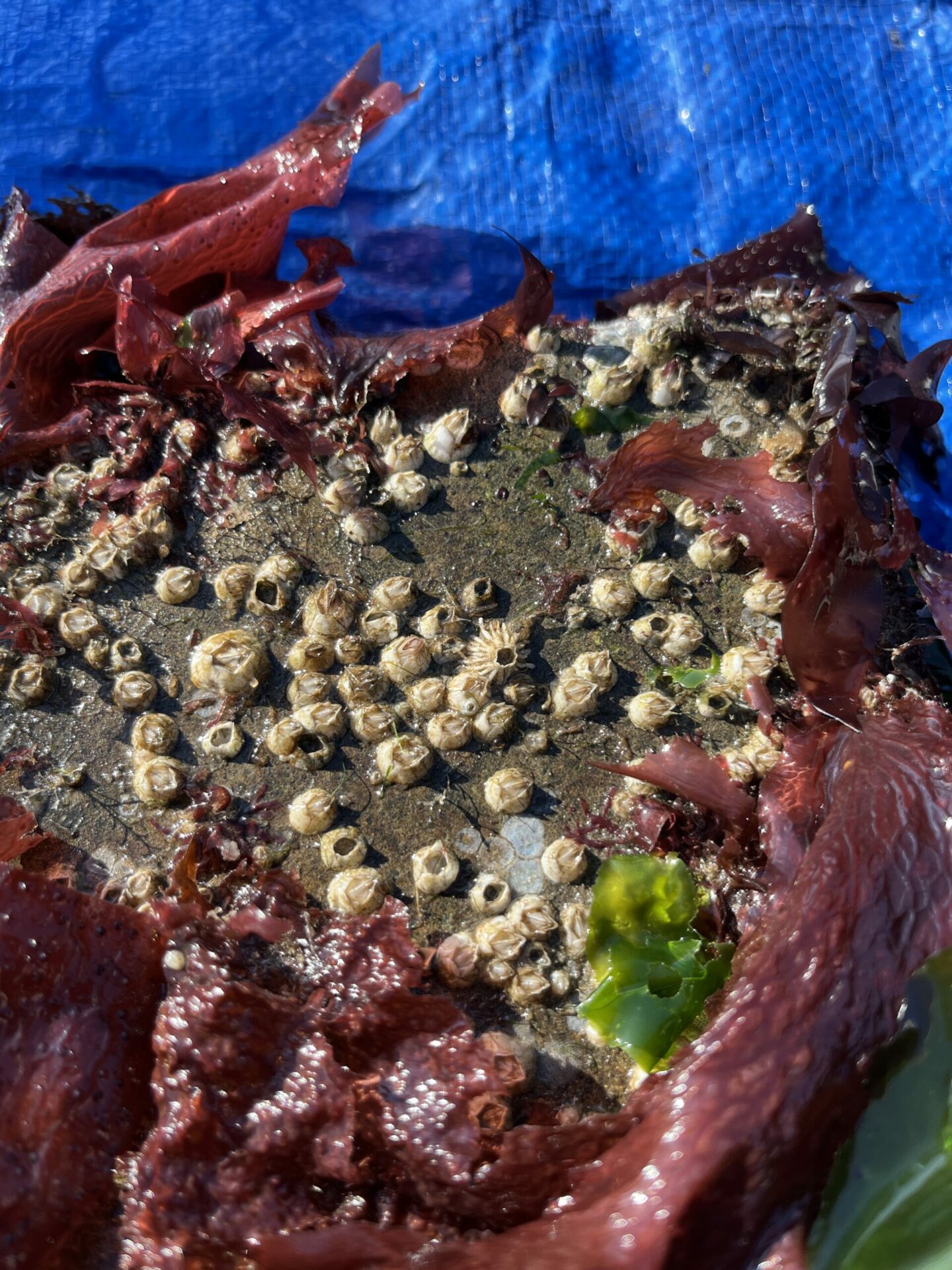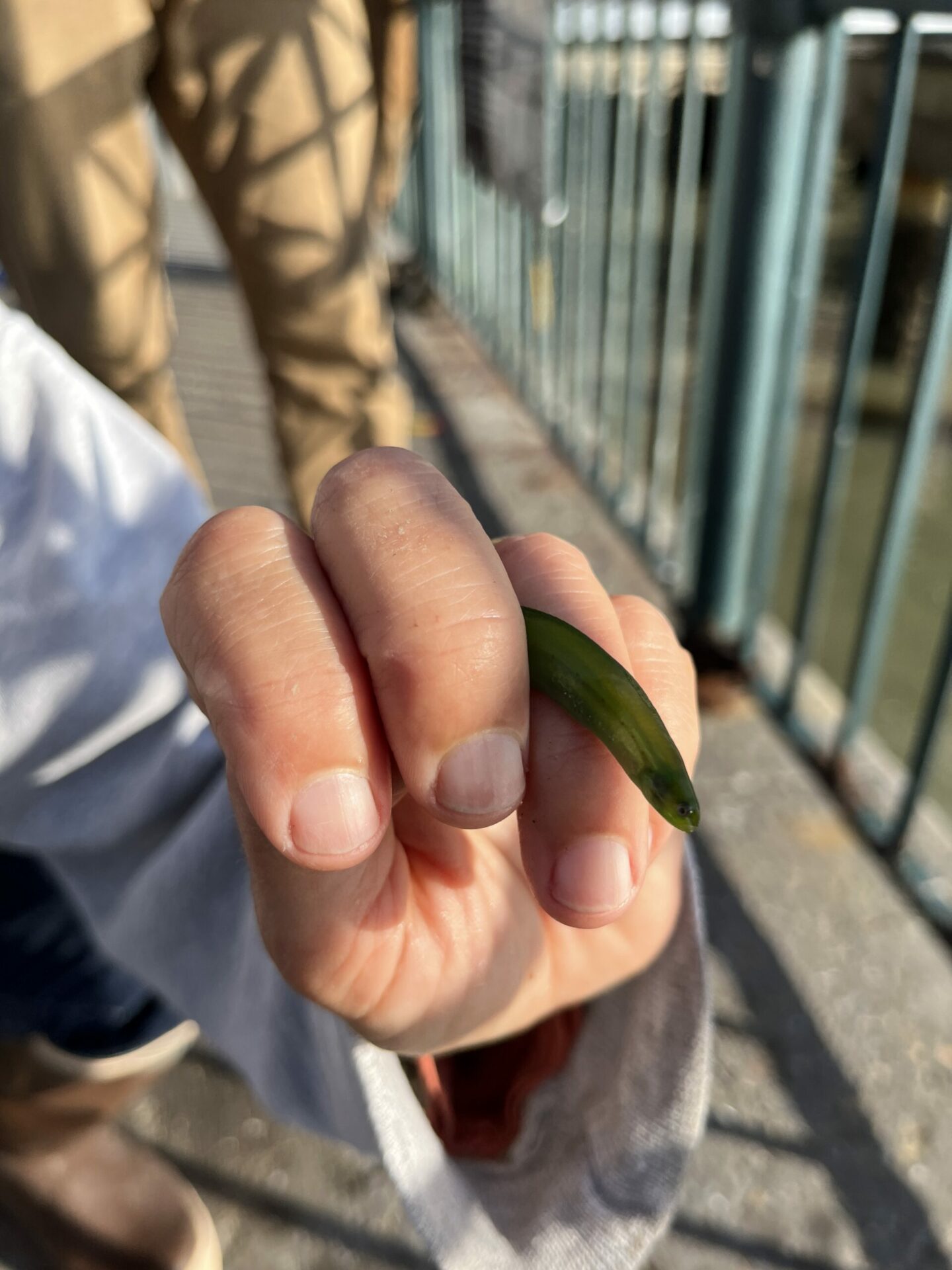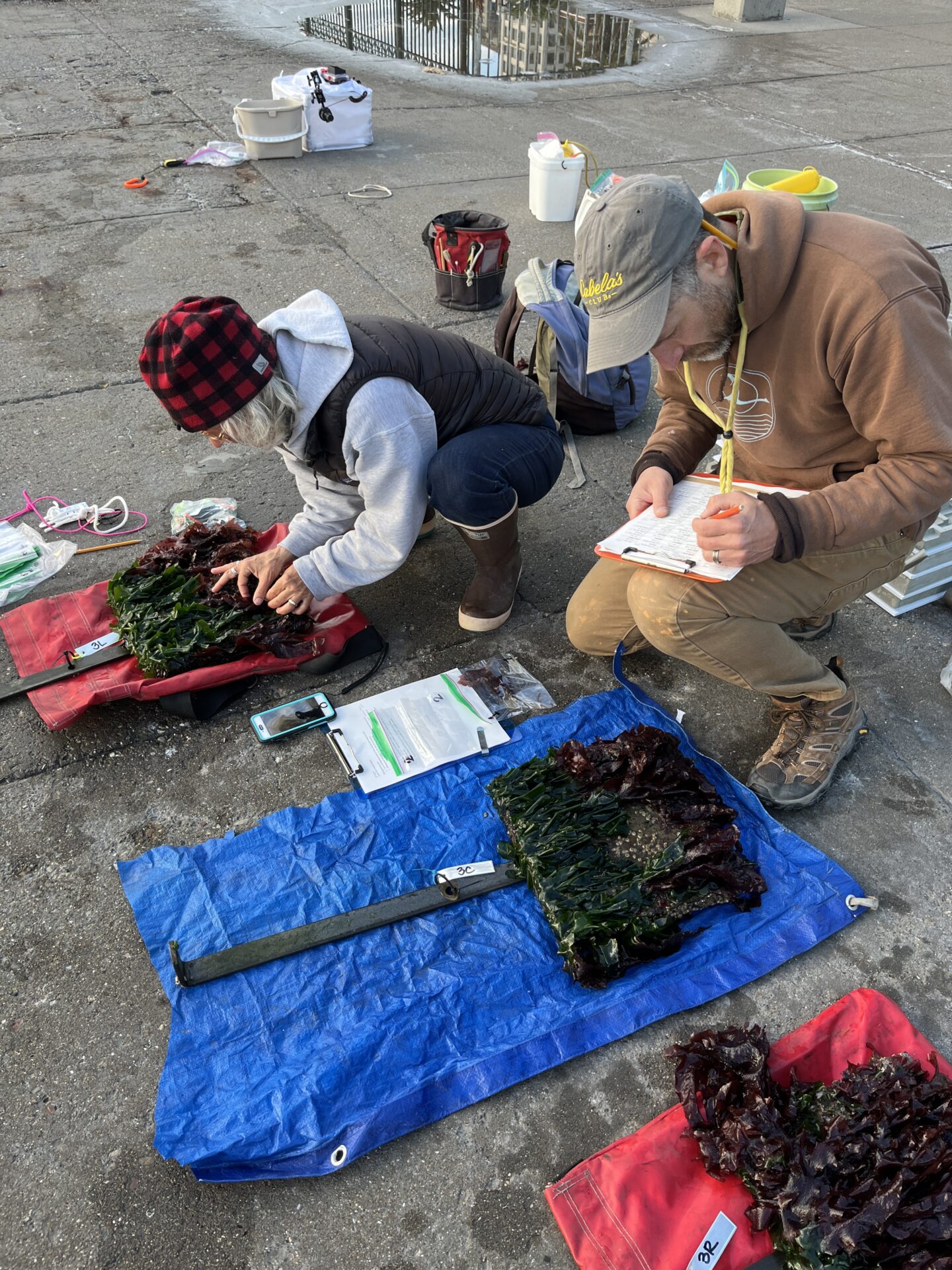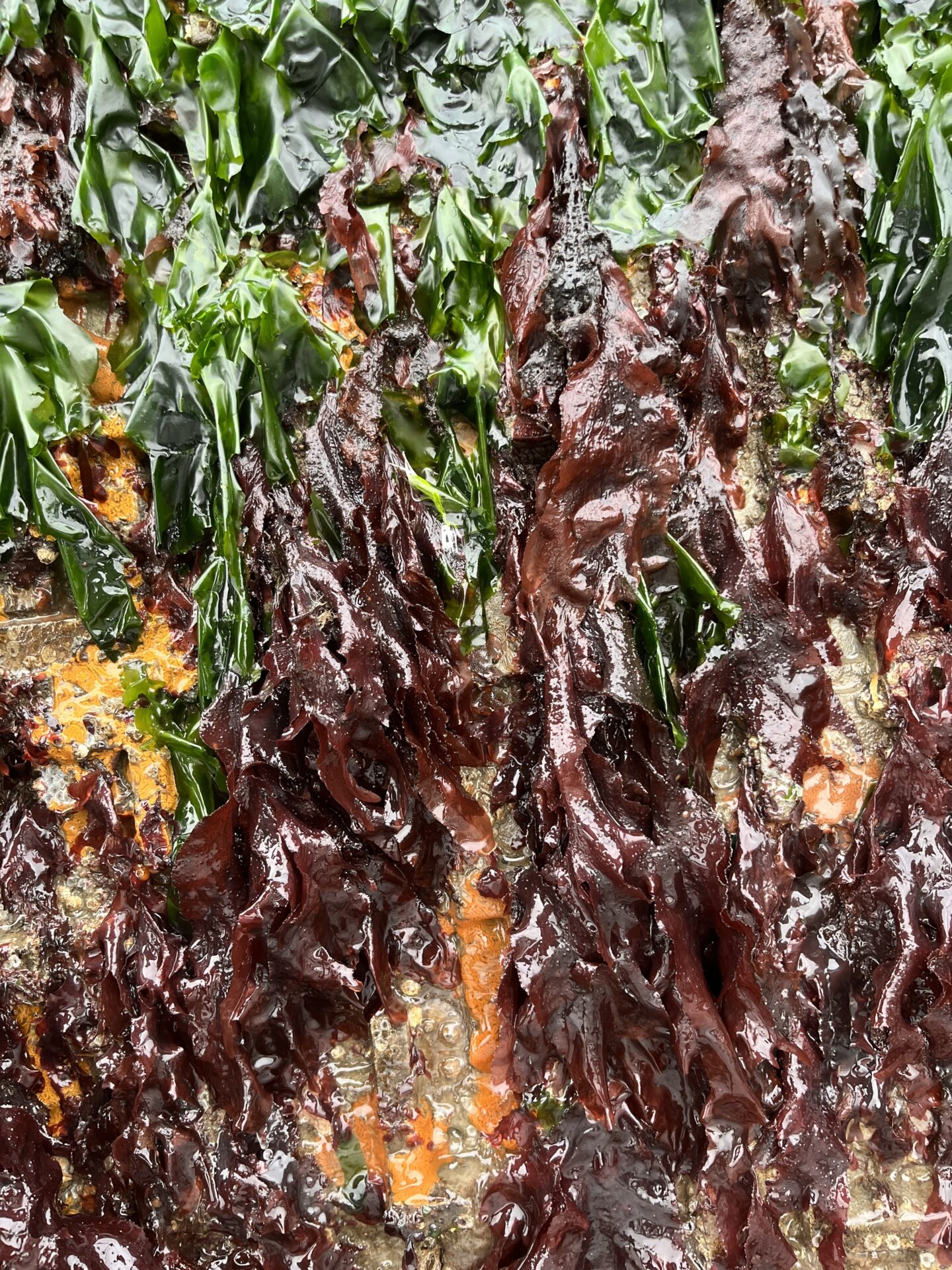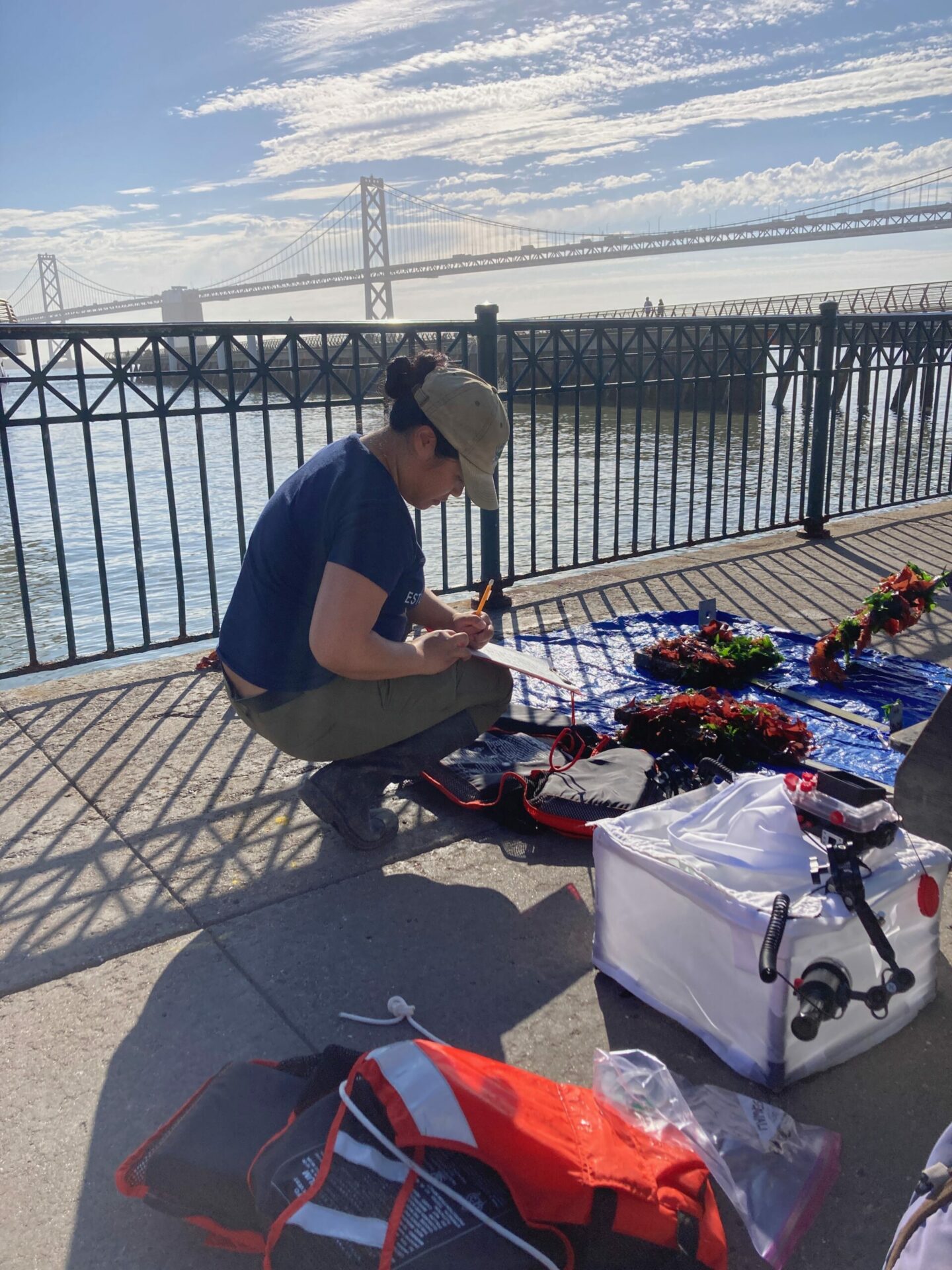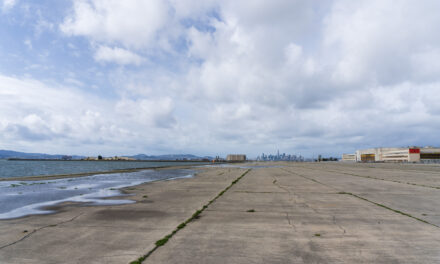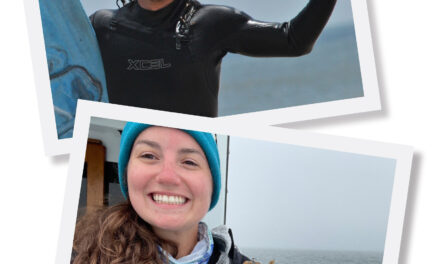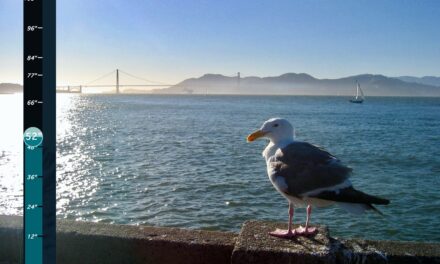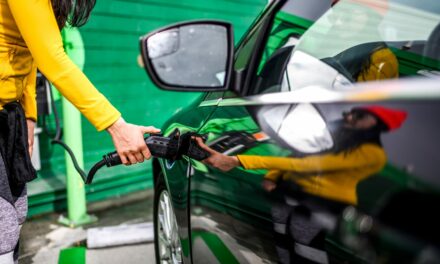Who’s on First at the SF Seawall?
Ecologist Andrew Chang and biological tech Jessika De Jesus sample new seawall tiles this August. Photo: Corryn Knapp, SERC/SFSU.
Ten months after the Port of San Francisco lowered 288 experimental tiles into the water, these bio-friendly seawall surfaces are already crawling with crabs and covered in kelp. This August, researchers are finally getting a good look at all the tile types in their experiment, which range from large to small, and from bumpy to smooth, and which were hung from the waterfront at three different locations and tidal elevations in October 2022.
“We saw a ton of native species and a few non-native ones,” says ecologist Andrew Chang with the Smithsonian Environmental Research Center, launching into a list including chitons, limpets, native oysters, Mastocarpus and Laminaria (red and brown algae ), hermit crabs … “We saw mobile critters settling on the tiles and making a home for themselves or migrating from the adjoining seawall, where there’s a more mature community.”
Scientist Chela Zabin and tech Jessika De Jesus scrutinize lower elevation tiles pulled up by port divers at South Beach Harbor marina site, before returning them to the water. Photo: Corryn Knapp, SERC/SFSU.
As reported in KneeDeep’s October 2022 story about the experiment, scientists and the port hope to ensure that the massive seawall rebuild required to adapt to rising sea levels along the San Francisco waterfront includes some habitats friendly to native intertidal and subtidal species. The experiment called for a two-year monitoring period, during which the science team would pay regular visits to the three sites so they could photograph and ID species on the tiles. Access to the tiles in the deepest water was to be provided by moveable frames, platforms and other installation innovations created by Port staff.
But this past March, during a brief lull in the wave-lashing from winter storms, port divers and the science team discovered quite a bit of damage to frames and some broken or missing tiles. Then the severe weather returned. “We couldn’t get anywhere near a complete check-in done, it wasn’t safe enough to get more than the barest of impressions,” says Chang.
This August’s push is more promising already. Though the frames and platforms were still unsafe at the South Beach Marina site, the team was able to view most of the tiles at the Agricultural Building (near the Ferry terminal) and Pier 45. “This site is much closer to the Golden Gate, so we saw more open-coast species like feather boa kelp that thrive in wave-exposed environments,” says Chang.
Native chitons and barnacles found at the Agricultural Building site at low tide. Photo: Chela Zabin, SERC.
Since the monitoring work is ongoing, such observations are just preliminary. But Chang was clearly excited to be putting on his drysuit, clipping into a harness, and hanging off a pier with a camera lightbox in one hand and a clipboard in the other to start filling in his data sheets. “After all the time spent working with a large group of people to design this experiment, and time talking about all the stuff that needed to happen to put it all in place, it’s great to get a good look at the tiles in action,” says Chang.
More definitive results should be ready by the end of the year. But one important take home, as Chang’s co-lead for the project Chela Zabin put it, was evident: “At first glance natives dominated.”
Other Recent Posts
Assistant Editor Job Announcement
Part time freelance job opening with Bay Area climate resilience magazine.
Training 18 New Community Leaders in a Resilience Hot Spot
A June 7 event minted 18 new community leaders now better-equipped to care for Suisun City and Fairfield through pollution, heat, smoke, and high water.
Mayor Pushes Suisun City To Do Better
Mayor Alma Hernandez has devoted herself to preparing her community for a warming world.
The Path to a Just Transition for Benicia’s Refinery Workers
As Valero prepares to shutter its Benicia oil refinery, 400 jobs hang in the balance. Can California ensure a just transition for fossil fuel workers?
Ecologist Finds Art in Restoring Levees
In Sacramento, an artist-ecologist brings California’s native species to life – through art, and through fish-friendly levee restoration.
New Metrics on Hybrid Gray-Green Levees
UC Santa Cruz research project investigates how horizontal “living levees” can cut flood risk.
Community Editor Job Announcement
Part time freelance job opening with Bay Area climate resilience magazine.
Being Bike-Friendly is Gateway to Climate Advocacy
Four Bay Area cyclists push for better city infrastructure.
Can Colgan Creek Do It All? Santa Rosa Reimagines Flood Control
A restoration project blends old-school flood control with modern green infrastructure. Is this how California can manage runoff from future megastorms?
San Francisco Youth Explore Flood Risk on Home Turf
At the Shoreline Leadership Academy, high school students learn about sea level rise through hands-on tours and community projects.






